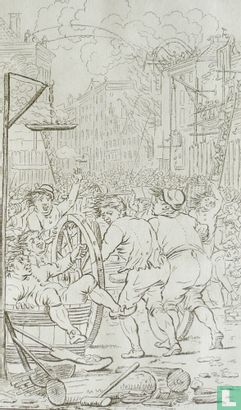



Catalogue information
"Breadwriter and performance artist Arend Fokke Simonsz (1755-1812) spent thirty years trying to serve the audience of at least twelve societies with instructive and at the same time entertaining lectures1. To meet that demand, he produced at a tremendous pace and with disregard for his health, one treatise after another and read them according to his own writing under harsh conditions. Sad, sad, worried, unwell or sullen, he took the chair of Taddel, the pulpit of the department of literature of Felix Meritis. His treatises reached it. public also via a different route than the public auditoriums In bookstores from Middelburg to Amsterdam the readership was eagerly subscribed to bulky publications such as the Boertige journey through Europe (1827), until more than a decade after the death of the performance artist / author. Fokke remained best known and most appreciated until the twentieth century for its Moderne Helico n (1792), in which he lashes out against sentimentalism and treats readers on a dream trip past sentimental paraphernalia - hot tears, worms, weeping willows and gravestones - that formed the backdrop nine years earlier in Rheinvis Feith's Julia3. his ironic-comic books from the second half of the nineteenth century onwards almost exclusively use epithets as' flat 'and' vulgar'4. Fokke himself would not have been surprised by this. Humor and appreciation for it were, according to him, bound to taste and taste was bound to geography and time. " Marike Vierstra, "" An unwilling smile " Something about the work of the 18th-century performance artist Arend Fokke Simonsz ", in: Announcements of the Jacob Campo Weyerman Foundation. Volume 17 (1994), no. 1, pp. 47-51.
This text has been translated automatically from Dutch
Click here for the original text



